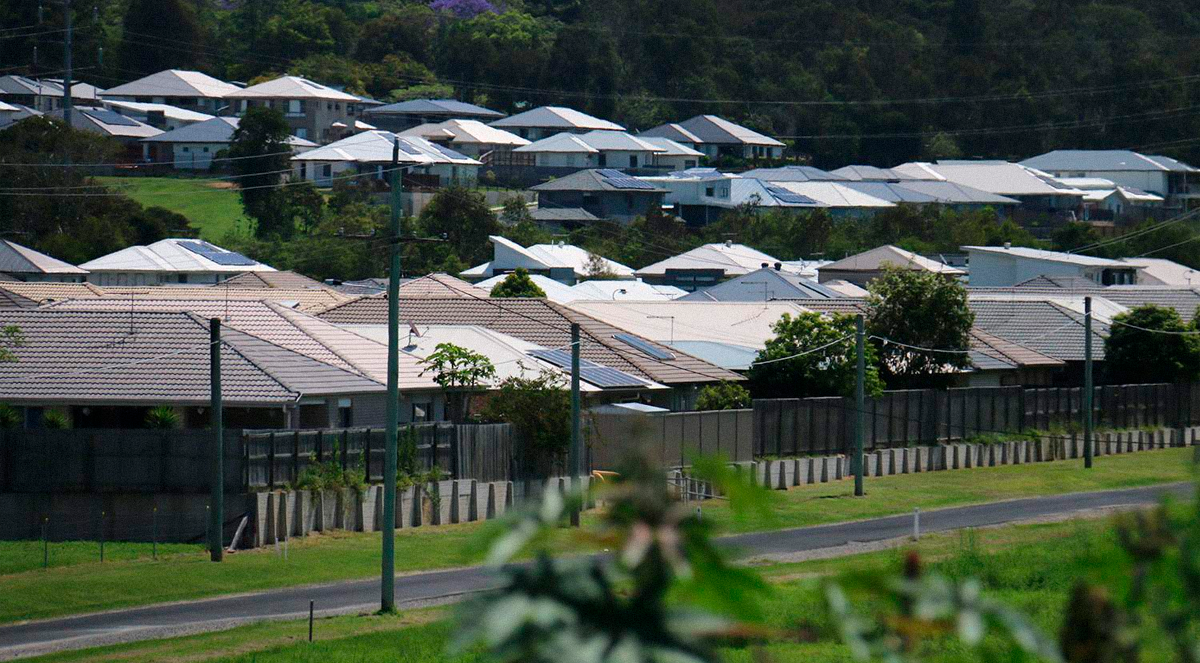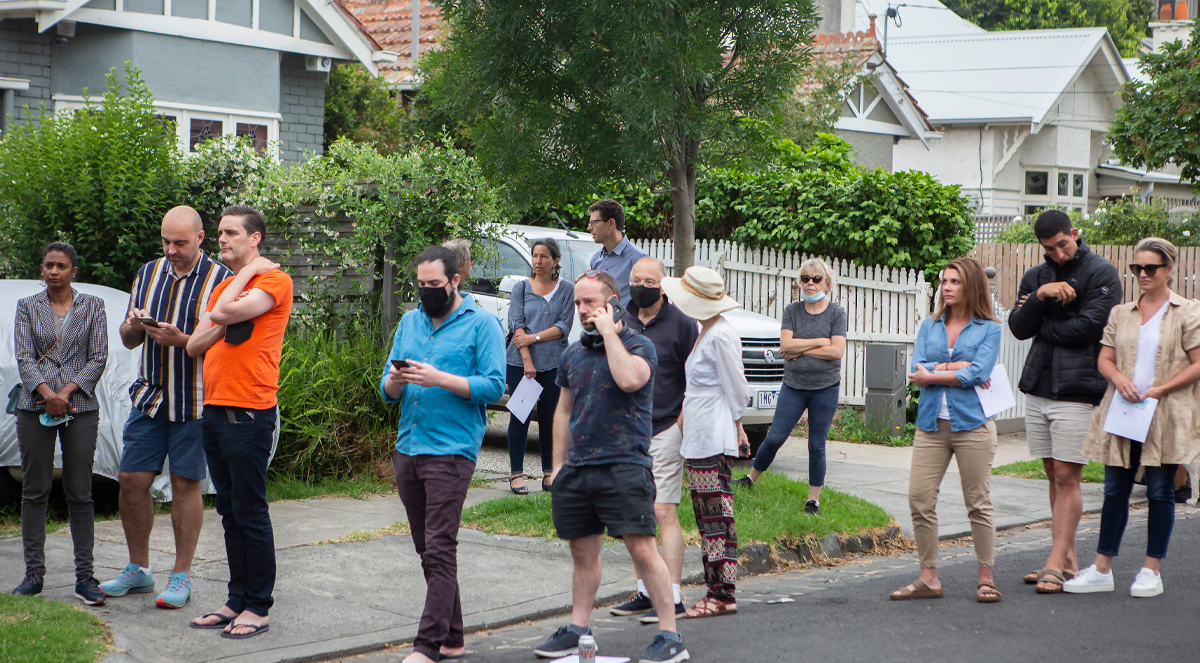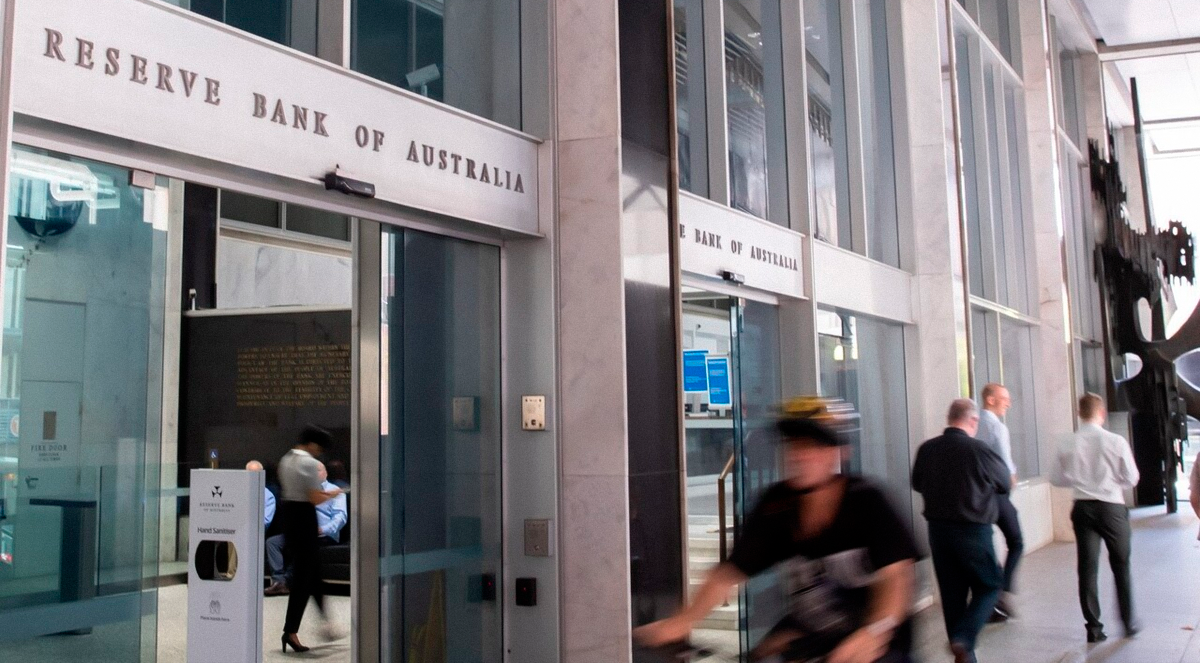-1.png)
Image from Bloomberg News
KEY POINTS
- Australia's annual inflation rate dropped to 2.1% in May 2025, with core (trimmed mean) inflation also falling to 2.4% — the lowest in over three years
- The lower inflation figures strengthen the case for a third RBA rate cut, with money markets already pricing in a July reduction
- AMP predicts a July rate cut with a further three 0.25% cuts by February next year, lowering the cash rate to 2.85% and easing pressure on mortgage holders
New data from the Australian Bureau of Statistics shows inflation rose 2.1% over the twelve months to the end of May 2025.
The result was significantly below market expectations.
The ABS figures also show core inflation in Australia has fallen to its lowest point in three-and-a-half years.
The lower-than-expected inflation figures strengthen the already strong case for the Reserve Bank of Australia to cut interest rates again at its upcoming July board meeting.
The details
The Bureau of Statistics says its monthly Consumer Price Index indicator rose 2.1% in the year to the end of May 2025.
It’s a significant drop on the 2.4% rise recorded in the 12 months to the end of April and was significantly below market expectations of a 2.3% result.
Annual headline inflation is also now almost a quarter of what it was when it spiked over 8% in December 2022.
“You can see that lower inflation is now happening everywhere,” says AMP’s Deputy Chief Economist, Diana Mousina.
“Rental growth was quite moderate… the cost of construction of a new home was actually down in the month of May.
“There was a big fall in holiday travel, both domestic and international.
“There were lower costs for insurance - insurance has been a big problem for inflation in recent times,” she told ABC News.
Ms Mousina says the only real surprise is that food inflation is still strong, but puts a lot of that down to seasonal factors, including the impact of weather events in Queensland and New South Wales, and problems with egg supplies because of bird flu outbreaks.
Core inflation
Crucially, core inflation has also fallen significantly.
The “trimmed mean” measure, which strips away more volatile components of inflation, fell from 2.8% in April to 2.4% in May 2025 - its lowest point in three-and-a-half years.
This is the Reserve Bank of Australia’s preferred inflation gauge.
With the headline CPI and trimmed mean measures now both under 2.5% - the mid-point of the 2-3% “target band” the RBA is mandated to keep Australia’s inflation in, the way is now clear for the central bank to cut interest rates for the third time this year at its upcoming July board meeting.
Before the inflation data was released, money markets had already priced in an 80-90% chance of a 0.25% interest rate reduction at that RBA meeting.
AMP Deputy Chief Economist Diana Mousina says the Reserve Bank of Australia usually likes to wait for more complete quarterly data before deciding on interest rate movements, rather than making decisions based on the more volatile monthly numbers.
The next quarterly inflation update is not due until the 30th of July, two weeks after the RBA’s next scheduled meeting.
However, Ms Mousina believes the central bank won’t wait until August to cut rates again.
“I think that there's been enough evidence in the last two months that we need to see lower rates,” she says, “and I do think that today's data, even though it's monthly, confirms the need for that.”
“We've got lower inflation, but pretty poor (economic) growth.”
Ms Mousina says the central bank is unlikely to be too concerned about global events, such as the current instability in the Middle East, putting upward pressure on inflation through things like higher oil prices.
“I do think that a rate cut is very likely at the July meeting,” she says, “followed by (more cuts in) August, November, and February (2026).”
If AMP’s Diana Mousina is right, that would be another 1% cut in official interest rates, taking the cash rate down to 2.85% early next year.
That would see most retail variable owner-occupied home loans fall into the 4 to 5.5% range, which would be extremely good news for mortgage holders, who’ve endured some of the highest interest rates in more than a decade over the last 18 months.
Property investors with interest-only loans would likely see their mortgage rates fall into the 5.5% to 6.5% range.
Stay Up to Date
with the Latest Australian Property News, Insights & Education.




.png?width=292&height=292&name=Copy%20Link%20(1).png)
 SIGN UP FOR FREE NEWSLETTER
SIGN UP FOR FREE NEWSLETTER





.jpg?width=1920&height=1080&name=Warning%2c%20You%20Might%20Be%20Facing%20Higher%20Taxes%20Soon%20(1).jpg)





.png?width=1920&height=1080&name=Rate%20Drops%20Signal%20BIGGEST%20Property%20Boom%20in%20DECADES%20(1).png)

.jpg?width=1920&height=1080&name=Labor%20vs%20Liberal%20These%20Housing%20Policies%20Could%20Change%20the%20Property%20Market%20Forever%20(1).jpg)
.jpg?width=1920&height=1080&name=QLD%20Slashes%20Stamp%20Duty%20Big%20News%20for%20Investors%20%26%20Home%20Buyers%20(1).jpg)
.jpg?width=1920&height=1080&name=Trump%20Just%20Slapped%20Tariffs%20%E2%80%93%20Here%E2%80%99s%20What%20It%20Means%20for%20Australia%20(1).jpg)
.jpg?width=1920&height=1080&name=Federal%20Budget%202025%20More%20Debt%2c%20No%20Housing%20%E2%80%93%20Here%E2%80%99s%20What%20You%20Need%20to%20Know%20(1).jpg)
.jpg?width=1920&height=1080&name=Australias%20Housing%20Crisis%20is%20about%20to%20get%20MUCH%20Worse%20(New%20Data%20Warns).jpg)
%20(1).jpg?width=1920&height=1080&name=Australias%20RENTAL%20CRISIS%20Hits%20ROCK%20BOTTOM!%20(2025%20Update)%20(1).jpg)
%20(1).png?width=1920&height=1080&name=Is%20Adelaide%20Still%20a%20Good%20Property%20Investment%20(2025%20UPDATE)%20(1).png)
.jpg?width=1920&height=1080&name=RBA%20Shocks%20with%20Rate%20Cuts!%20What%E2%80%99s%20Next%20for%20Property%20Investors%20(1).jpg)
%20(1).jpg?width=1920&height=1080&name=I%20Predict%20The%20Feb%20Rate%20Cut%20(My%20Price%20Growth%20Prediction)%20(1).jpg)
.png?width=1920&height=1080&name=Why%20Property%20Prices%20Will%20Rise%20in%202025%20Market%20Predictions%20(1).png)
.jpg?width=1920&height=1080&name=Why%20Investors%20Are%20Choosing%20Apartments%20Over%20Houses%202%20(1).jpg)
.jpg?width=1920&height=1080&name=Why%20Rate%20Cuts%20Will%20Trigger%20A%20Property%20Boom%20(1).jpg)
.jpg?width=1920&height=1080&name=Retire%20On%202Million%20With%20One%20Property%20(Using%20SMSF).jpg)
.jpg?width=1920&height=1080&name=4%20Reasons%20Why%20You%20Should%20Invest%20in%20Melbourne%20Now%20(1).jpg)
%20(1).jpg?width=1920&height=1080&name=Old%20Property%20vs%20New%20Property%20(Facts%20and%20Figures%20Revealed)%20(1).jpg)
%20(1).jpg?width=1920&height=1080&name=Will%20The%20New%20QLD%20Govt%20Create%20a%20Property%20Boom%20or%20Bust%20(My%20Prediction)%20(1).jpg)
%20Scott%20Kuru%20(1).jpg?width=1920&height=1080&name=Inflation%20Hits%20Three-Year%20Low%20(Will%20RBA%20Cut%20Rates%20Soon)%20Scott%20Kuru%20(1).jpg)
.jpg?width=1920&height=1080&name=How%20to%20Buy%20Investment%20Property%20Through%20SMSF_%20The%20Ultimate%20Guide%20(1).jpg)
.jpg?width=1920&height=1080&name=Victoria%20Slashes%20Stamp%20Duty%20Melbourne%20Set%20to%20Boom%20Scott%20Kuru%20(1).jpg)
.png?width=1571&height=861&name=Are%20Foreign%20Buyers%20Really%20Driving%20Up%20Australian%20Property%20Prices%20(1).png)
.jpg?width=1920&height=1080&name=The%20Single%20Factor%20That%20Predicts%20Property%20Growth%20Regions%20(1).jpg)
%20Scott%20Kuru%20(1).jpg?width=1920&height=1080&name=My%20Prediction%20On%20Rates%20%26%20Negative%20Gearing%20(Market%20Crash)%20Scott%20Kuru%20(1).jpg)

-1.png?width=1920&height=1080&name=Major%20Banks%20Cut%20Rates%20Will%20RBA%20Follow%20Suit%20(Sept%20Rate%20Update)-1.png)
%20Scott%20Kuru-1.png?width=1920&height=1080&name=Rate%20Cut%20Coming%20What%20New%20Zealands%20Move%20Means%20for%20Australia%20(Sept%20Prediction)%20Scott%20Kuru-1.png)
%20(1).jpg?width=1920&height=1080&name=Buy%20when%20the%20interest%20rates%20are%20high!%20(Why%20you%20must%20buy%20now!)%20(1).jpg)
.jpg?width=1920&height=1080&name=Carms_Revised%20Taxes%20Due%20Aug%209%20YT%20Thumbnail02%20(1).jpg)
.jpg?width=1920&height=1080&name=Carms_Too%20Little%20Too%20Late%20Aug%207%20YT%20Thumbnail01%20(1).jpg)









.jpg?width=1920&height=1080&name=Carms_Rate%20Drop%20In%20July%20Jun%2010%20YT%20Thumbnail02%20(1).jpg)
.jpg?width=1920&height=1080&name=Carms_Own%20a%20Property%20V6%20Jun%205_YT%20Thumbnail%20(1).jpg)









.png?width=1920&height=1080&name=Artboard%201%20(3).png)






.jpg?width=1920&height=1080&name=YT%20thumbnail%20%20(1).jpg)

